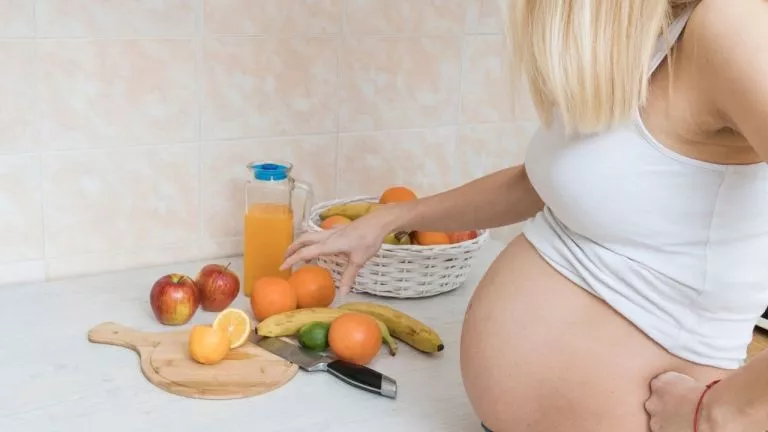Complete Guide on Homemade Baby Food Recipes in 2022
Have you celebrated your baby’s half birthday? Is your baby ready for eating foods?
If yes,
Then pull out the bibs for your little one, and be ready to prepare healthy, delicious homemade baby food recipes for your little one.
Homemade baby food and commercial baby food are two options for parents to feed the baby. No doubt, both are healthy but many doctors and nutritionists suggest go for homemade baby food recipes.
Homemade food is economical can be prepared by combining the different food items easily available at home. Your baby gets a variety of foods through homemade food recipes which is helpful for healthy growth and to familiarize with different tastes and flavors.
Typically, the period from the age of 6- 24 months, is a critical period of growth during which nutritional deficiencies can make your baby undernourished.
And it is the period where; the parents and the baby are learning at the same time. The baby is learning how to chew the food and the parents are learning how to prepare and feed the baby different food.
Here, we will cover the required food texture and different homemade baby food recipes as per the baby’s developmental stages. Let’s start with basic information about the required food texture and consistency for homemade baby food recipes.
Food Textures Based on Baby’s Developmental Stages
Baby needs a variety of food textures during its developmental stages. The introduction of different food textures improves its chewing skill and chewing helps in speech development. From the age of 6 months to 1 year, your baby’s food texture changes from thin puree to finger food. Proper food texture selection is essential to get proper nutrients.
There are 3 common food textures- Purred or mashed form, Minced and Chopped form, for introducing solid food to babies.
The first starts with the purred form in which you choose thin puree for few days, then gradually go for thick pureed food. Then move on to minced food and then chopped food. Let us see one by one.
- Pureed or mashed form: This form of food is ideal from age 6 to 8 months of age. Smooth, lump-free food is included in this form.
- Minced form: This form can be introduced from 8 months onward. Lumpy mashed foods, finely chopped foods are included in this form.
- Chopped form or finger food: 10 months onward, most babies can eat a chopped form of food. This is a thicker and more coarse texture of food.
When your baby is one year old, they should be eating the same foods that the other family members are eating, but you have to cut them into small pieces.
Remember: As you know, one size is not fit for all, every baby develops at their own pace, so be patient with their progress and continue to offer new textures.
Homemade Baby Food Recipes:

Babies need food from all five food groups- Grains or cereals, Protein (Nonveg and Pulses), Fruits, Vegetables, Dairy Products. These food groups are categorized based on the different nutrients they have.
So, keep in mind that homemade baby food recipes should contain one ingredient from each food group. Of course, start with single food thin puree but gradually increase the number and quantity of ingredients.
Let’s see different forms of homemade baby food recipes for different developmental stages.
Before we proceed with recipes preparation, note that no sugar and no salt rule for baby food till your baby turns one year old.
Purred form recipes for the age group 6-8 months
Carrot Puree
Ingredients:
Carrot
Directions:
- Wash the carrot, dry it.
- Peel it and cut it into small pieces.
- Put in the steamer with little water and let cook until soft.
- Cool it and add in the blender and the water which is left after cooking.
- Make a smooth puree. Shift from thin to thick puree when your baby learns to swallow thin puree.
Beetroot, Apple and Potato Puree
Ingredients:
Beetroot, Apple and Potato
Directions:
- Wash all ingredients properly.
- Cook all three ingredients in a pressure cooker or steamer till became soft.
- Cool down, remove the peels, and add in a blender.
- Make a smooth textured puree.
- Adjust the consistency with water, breast milk, or infant formula.
Rice, Liver, Spinach Puree
Ingredients:
Rice, Liver, and Spinach
Directions:
- Wash all ingredients separately with water.
- Put spinach leaves in hot, boiled water until become soft.
- Remove the soft cooked leaves and let them cool.
- Cut the liver into small pieces.
- Pressure cooks rice and liver separately and lets them cool.
- Add all the ingredients to the blender. You can add
- Make a smooth, thick puree.
Minced form recipes for the age group 8-10 months
Vegetables Dal Kichadi
Ingredients:
Rice, Green gram Dal, Carrot, Cauliflower, Turmeric, Cumin powder and Ghee
Directions:
- Clean and wash rice and green gram dal with water.
- Wash all the vegetables. Cut into small pieces with a knife.
- Mix all the ingredients except ghee and cumin powder, add water, and pressure cook.
- Add ghee and cumin powder. Cool the mixture, and mash it with a masher.
- Don’t make a smooth paste. Keep the coarse structure of khichadi. Adjust the consistency with water or breast milk.
Chicken mince+ Cottage cheese+ Rice flakes + Green peas mash
Ingredients:
Boneless chicken, Cottage cheese, Rice Flakes, Green Peas, Cinnamon powder
Directions:
- Wash boneless chicken and minced it and pressure cook.
- Clean rice flakes and wash them with water and soak in water for 2/3 min.
- Use the steamer to make green peas soft.
- Grate the cottage cheese with a grater.
- Mix all the ingredients and mash it with a masher and keep coarse and thick consistency.
Chopped form food for the age group 10+ months
Once your baby became a master in eating lumpy mashed, minced food, the next stage is chopped food or finger food. Ensure the chopped pieces are long strips so the baby can hold them with fingers.
- Soft fruit pieces of banana, avocadoes, ripe mango
- Cooked apples, carrot, and beet
- Roasted sweet potato,
- Bread, biscuit, and toast pieces
- Cooked pasta, roti pieces
- Cooked boneless meat, chicken and egg omelet pieces, etc.
Key Points to Know About Preparation and Feeding of Homemade Baby Food
Traditionally, rice cereal is the first food for babies. Only providing rice cereal is not recommended by the Food and Drug Administration, because of exposure to arsenic.
- There is no exact order of food introduction. You can start with other fortified cereals such as barley, oat, and ragi, etc.
- Start with a single ingredient without salt and sugar and continue feeding for 3-5 days. And observe the reaction for diarrhea, stomach discomfort, and vomiting, etc.
- After introducing single ingredients food, gradually add one more ingredient from other food groups to feed your baby. These food groups are – Grains, Fruits, Vegetables, non-veg and pulses group. Then you can add two or more ingredients from these groups.
- Always introduce the new food in the daytime. So, you can get a whole day to observe the reaction. After 3-5 days, when the baby is comfortable with that food, shift that food in the evening time and again start the new one in the morning.
- Also introduce allergen food single at a time, wait for symptoms for 2 days and introduce new allergen food and repeat these foods over 3 days and monitor the reactions.
- You can use breast milk or infant formula or water to adjust the consistency of food to smooth and easy to swallow.
- Mash or puree vegetables, fruits to give a smooth texture.
- Hard vegetables like carrot and fruits like apple need cooking so can be easily mashed or pureed. De-seed and remove hard pits from fruits.
- Remove bones, skin, fat from poultry, meat, and fish before cooking.
- Start with half or less spoonful food, put the food on the baby’s tongue.
- For feeding solid foods, never use a bottle or other feeding device.
- Feed, when the baby is hungry and understand the signs of hunger.
- Do not force to eat all the portions. If your baby cries and turns away when you feed, go back to breastfeeding. Try it at the next feeding time. Remember, introducing solid food is not one day process, it is gradual.
Food Safety Points to Considered While Preparing Homemade Baby Food
Hygienic preparation and storage of foods are important to avoid food-borne illness.
- Wash hands with soap and water before handling the foods.
- Wash/ clean /sort/ scrub and peel fruits and vegetables and other foods according to their nature.
- Wash and dry required equipment and utensils and kept covered.
- Sterilize the feeding bottles or bowl and spoon, dry, and kept covered.
- The foods should be cooked properly to destroy harmful bacteria.
- Prepare it in small portions to avoid storage for a long time.
- To freeze the individual servings, put the portion in an ice cube tray, cover it tightly and then pop the cubes and store in a freezer bag or airtight container and label it with a date.
- Wash your hands before feeding.
Read More:
Conclusion
Homemade baby food recipes will provide a variety of food textures to your baby and gradually the baby gets familiar with the family food habits.
Homemade baby food is fresh, preservative-free, nutritious, and less expensive. And you can add ingredients from different food groups and modify the recipes according to your baby’s likes and also make it more nutritious.
FAQ:
Q. Why are cooked fruits and vegetables used in baby food recipes?
A. Fruits and vegetables such as apples and carrots are hard to chew for babies. Cooking makes them soft, you can mash them and feed them without choking risk. Cooking breaks down the cellulose and makes it easy to digest. Banana and avocado are the exceptions, baby can have it raw.
Q. When do I start to give water to my baby?
A. Start to give a small amount of water to babies when you introducing solid foods. When your baby is 6-12 months of age, you can give 4-6 ounces of water per day.
Q. Why there is a big no for sugar and salt in baby food till the age of 1 year?
A. Babies require just about 1gm salt (0.4 gm Sodium) till their 1 year. And this small requirement is fulfilled by fruits and vegetables and other foods. Extra sodium intake can create a burden on the kidneys.
Sugar requirement is fulfilled by carbohydrates present in the food and naturally sweet food. Excess sugar intake can cause obesity, diabetes, and tooth decay in later stages.
Q. What substitute of sugar can I use in baby food?
A. There is no need for sweetening of food. Many fruits and vegetables like mango, sapota, sweet potatoes, etc. are sweet. Mixing these foods into baby food makes it naturally sweet.
You can also add dates and dry dates powder in cereal porridges to get the natural sweetness to baby food (after 8 months). Honey is not recommended till 1 year.






